Kepler
Latest

There could be as many as six billion Earth-like planets in our galaxy
The findings could have a big impact on future space missions.
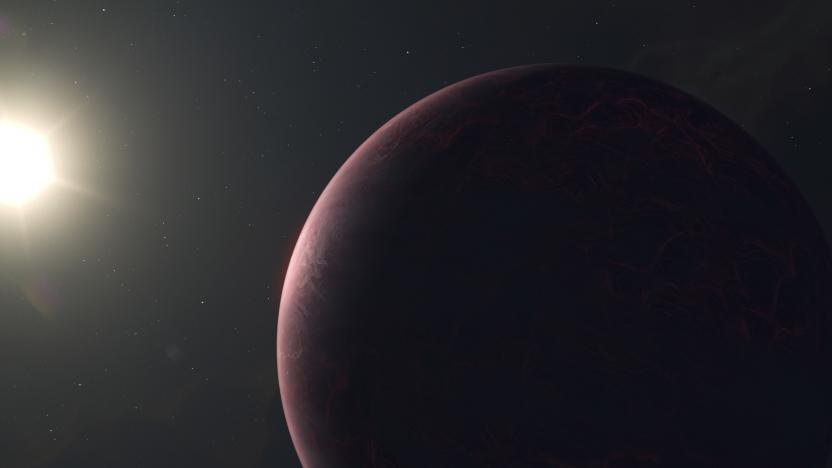
Scientists find a likely Earth-like planet orbiting a Sun-like star
Astronomers have discovered an exoplanet that's not only comparable to Earth, but is orbiting a Sun-like star.
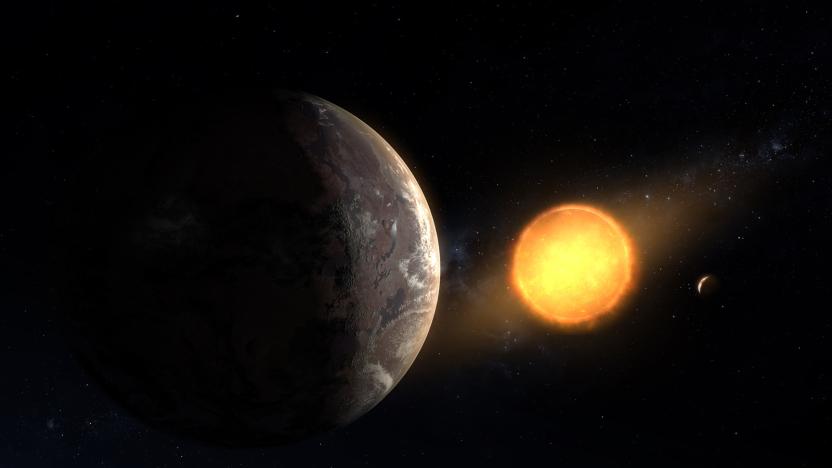
Scientists find an Earth-like planet hiding in old Kepler data
The newly discovered Kepler-1649c is a close parallel to Earth, but whether or not it supports life is another story.
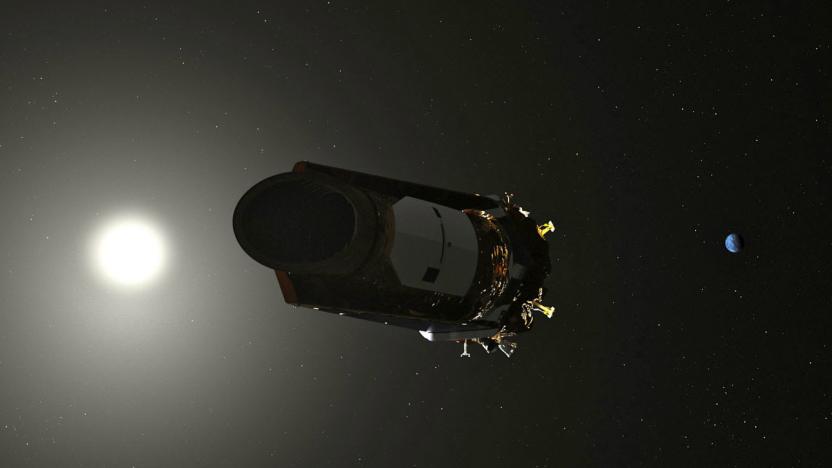
Kepler beams back final image from its almost decade-long journey
NASA bid a bittersweet farewell to its Kepler spacecraft in October. During its nine-and-a-half year journey, the space telescope spotted more than 2,600 planets outside of our solar system. Not bad for a mission that was initially expected to last 3.5 years. And retirement didn't stop it from beaming back additional discoveries in the new year, among them a previously overlooked gas-rich world similar to Neptune, a super Earth and a Saturn-sized body orbiting a Sun-like star. But now the space agency has shared Kepler's "last light" image taken on September 25th. NASA claims the view marks the craft's final record before it ran out of fuel roughly a month later.

Researchers propose guiding large space telescopes with tiny satellites
Using the recently retired Kepler space telescope, scientists have confirmed thousands of exoplanets, and as its successor TESS ramps up its search, we're poised to discover plenty more. But once we find exoplanets, learning more detailed information about them requires larger, more powerful space telescopes. These telescopes would need very large mirrors, much like NASA's upcoming (and continuously delayed) James Webb Telescope, which will use its 6.5-meter-wide mirror to observe extremely distant galaxies. And like the James Webb Telescope, they very well could have a mirror made up of many individual segments -- Webb's has 18.

NASA bids Kepler 'goodnight' with last set of commands
The Kepler Space Telescope has officially gone to sleep for good. On November 15th, the death anniversary of its namesake German astronomer Johannes Kepler, its ground team sent it a series of "goodnight" commands. They were meant to disable the telescope's safety modes that could switch it back on and to shut down its transmitters to completely cut off communications. Since the observatory is spinning, the team had to time their beams -- a task they successfully accomplished, because according to Kepler's Twitter account, it indeed received the final set of commands.

After Math: The best kind of falling star
Gavin McInnes and his gang of Proud Boys, newly minted stars of the Alt-Right, took their first steps back toward irrelevancy this week when they got themselves banned from Facebook. At the same time, we've had to say goodbye to a pair of space-based telescopes (Kepler and Dawn), as they reached the end of their operational lifespans; Roscosmos blamed the recent Soyuz launch failure on a bent sensor pin and Apple announced that it would no longer report the sales numbers for the stars of its product lineup -- iPhones, iPads and Macs -- after it was reported that smartphone sales slumped six percent globally this year.
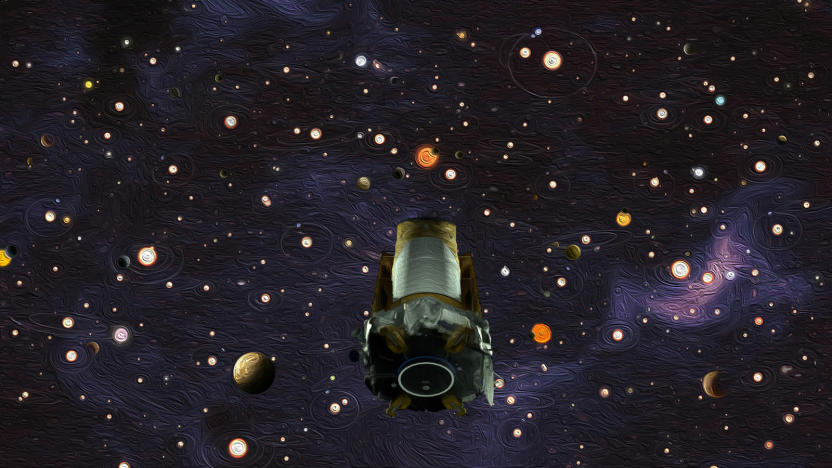
The Kepler space telescope's end has finally come
The time has finally come to say goodbye to Kepler, the spacecraft that exceeded expectations throughout its mission and has so far confirmed more than 2,600 planets outside of our solar system. In March, NASA warned that Kepler's end might be nearing as it was running very low on fuel, and scientists running the spacecraft have put it to sleep multiple times over the past few months in order to preserve what fuel it had left. But even as recently as last month, Kepler demonstrated that it still had enough juice to continue collecting data and launched into its 19th observation campaign. However, Kepler has now run out of fuel and NASA has retired the spacecraft after nine years of observations.
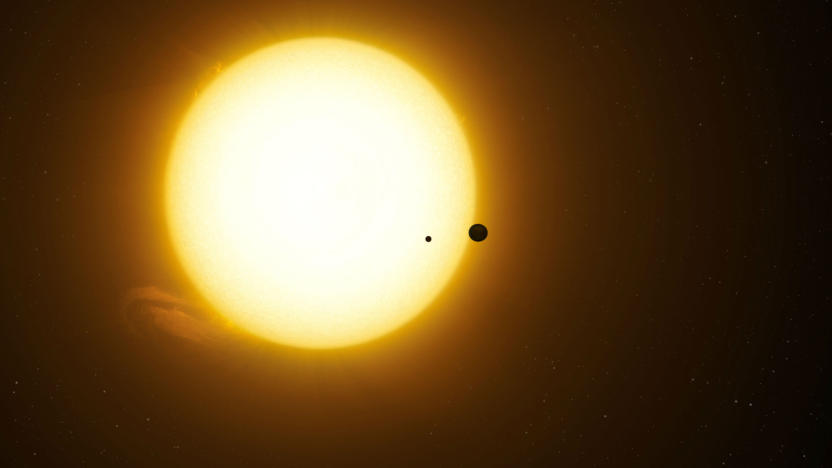
Researchers may have found the first signs of an exomoon
Over the last couple of decades, we've spotted thousands of planets outside of our solar system -- Kepler alone has confirmed more than 2,600. But so far, we've haven't found any exomoons, despite the likelihood of them being prevalent in our galaxy. Because moons tend to be much smaller than their planet counterparts, they're harder to spot, which is probably why we have yet to find any. However, researchers at Columbia University have now found evidence of what might be an exomoon located thousands of light-years from Earth.
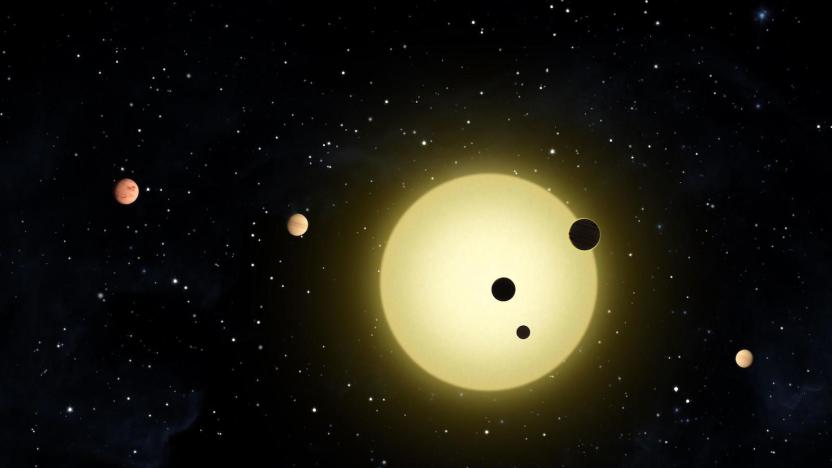
NASA put Kepler back to sleep in hopes it will send data again
Kepler has been running low on fuel for some time, so much so that NASA even put the spacecraft into a sleep mode in July in order to make sure it had enough fuel to transmit data back to Earth. But the planet-hunter has kept chugging -- it even kicked off a new data collection campaign in August. However, Kepler has run into another snag, and NASA has decided to put it back to sleep for the time being.

After Math: Ch-Ch-Ch-Changes
This has been quite the "disruptive" week with TechCrunch's marquee event going on at the San Francisco Moscone Center, and not just for startups. InfoWars was disinvited from yet another social media platform, Walmart is drastically expanding its self-driving Tesla truck order, and the world's largest wind farm just opened for business.

Planet-hunting Kepler telescope declares that it is not, in fact, dead
At this point, most space enthusiasts and insiders have said their goodbyes to the Kepler spacecraft. We've known for months that it's very low on fuel, and its planet-hunting replacement, TESS, has already launched. But Kepler has a mind of its own, apparently. Despite the fact that its level of fuel is now crippling, and it's had its share of mechanical issues, the telescope is once again back to work collecting scientific data and looking for new exoplanets.
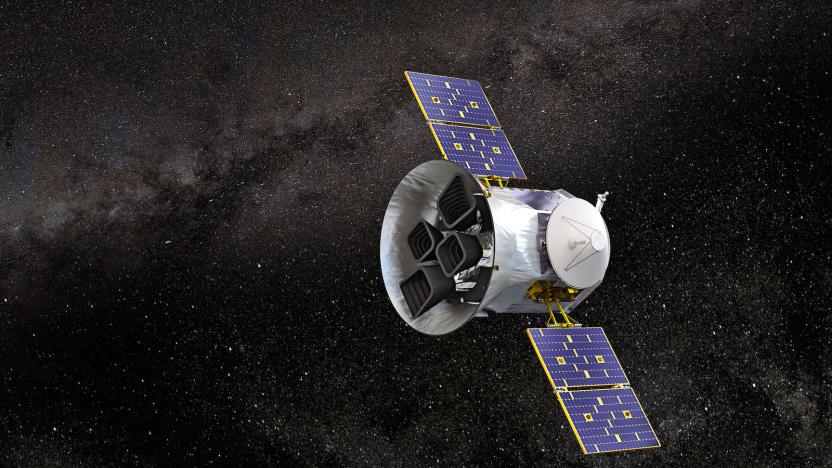
NASA’s TESS spacecraft begins its search for exoplanets
NASA's TESS spacecraft is officially up and running. The agency recently announced that TESS, which stands for Transiting Exoplanet Survey Satellite, started its search for exoplanets -- planets outside of our solar system -- on July 25th. Its first data transmission is scheduled for August. "I'm thrilled that our new planet hunter mission is ready to start scouring our solar system's neighborhood for new worlds," Paul Hertz, director of the Astrophysics Division of NASA's Science Mission Directorate, said in a statement. "Now that we know there are more planets than stars in our universe, I look forward to the strange, fantastic worlds we're bound to discover."

NASA put Kepler to sleep to preserve its remaining fuel
NASA announced today that the Kepler spacecraft, which has been searching for distant Earth-like planets near Sun-like stars, is running very low on fuel. So much so, that it has decided to put Kepler in a sleep mode to preserve fuel over the next few weeks. Back in March, the agency warned that this could happen soon and on Monday, the Kepler team observed a drop in the spacecraft's fuel pressure, indicating a very low fuel level. So for now, Kepler won't conduct any more scientific observations and will instead rest until August 2nd when research it has collected over the last 51 days is scheduled to be downloaded.

NASA's TESS spacecraft may find 1,600 new planets in the next two years
On Monday evening, NASA plans to launch a brand new satellite into orbit, courtesy of a SpaceX Falcon 9 rocket. Called TESS (the Transiting Exoplanet Survey Satellite), the spacecraft is designed to detect planets outside our solar system (called exoplanets) that are relatively close to our solar neighborhood.

NASA's planet-hunting spacecraft Kepler is near the end of its life
NASA's Kepler spacecraft has been in orbit of the Earth for nine years. In that time, it's well exceeded its original 3.5-year mission and has pinpointed over 4,500 exoplanets and candidates. It's a little bit heartbreaking (though not unexpected), then, that NASA revealed that the spacecraft is on its last legs. Kepler will run out of fuel in the next few months and will soon be dead in space.
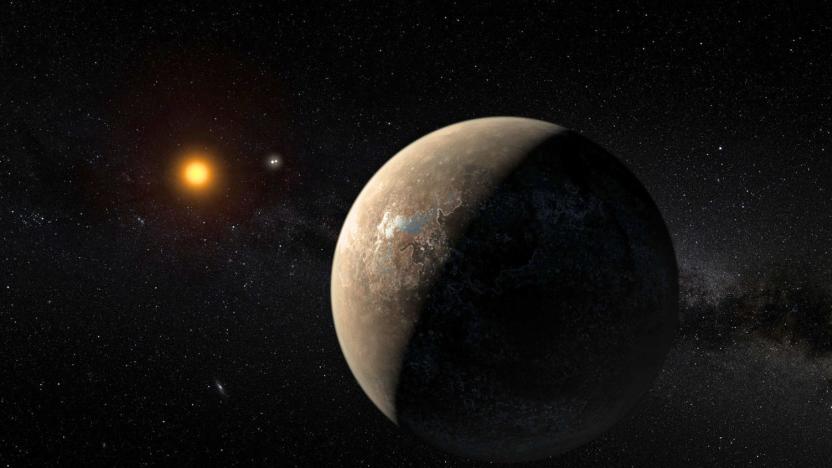
Google researchers use AI to spot distant exoplanets
Hunting for exoplanets is a very data-intensive and time-consuming task. Sifting through piles of data to find subtle signs of distant planets takes quite a lot of work, but researchers at Google have been developing a way to use AI to make the process faster and more effective.
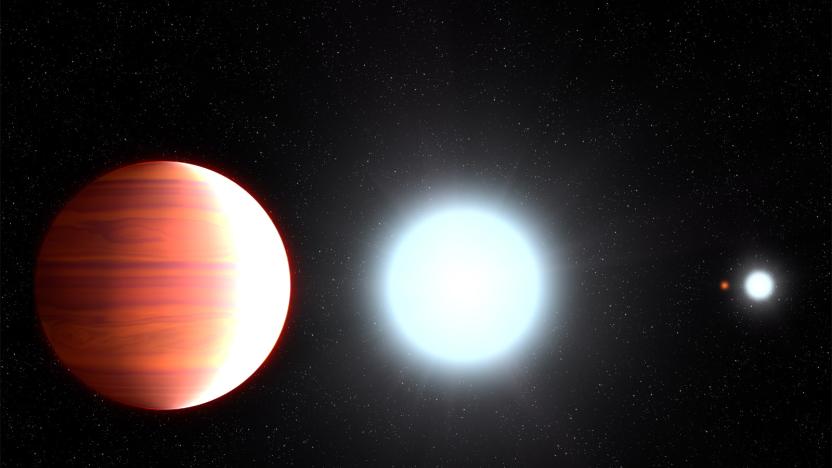
It rains sunscreen on this 'hot Jupiter' exoplanet
Anyone who can conjure up a way to collect resources from Kepler-13Ab in the far future could become a sunscreen magnate. On the heavenly body, one of the hottest Jupiter-sized exoplanets the mission has ever discovered, titanium oxide falls from the skies. The planet is so close to its host star that, like our moon, one side permanently faces Kepler-13A while the other is permanently in darkness. This titanium oxide "snowfall" takes place on the dark side, because winds tend to carry it to colder areas.
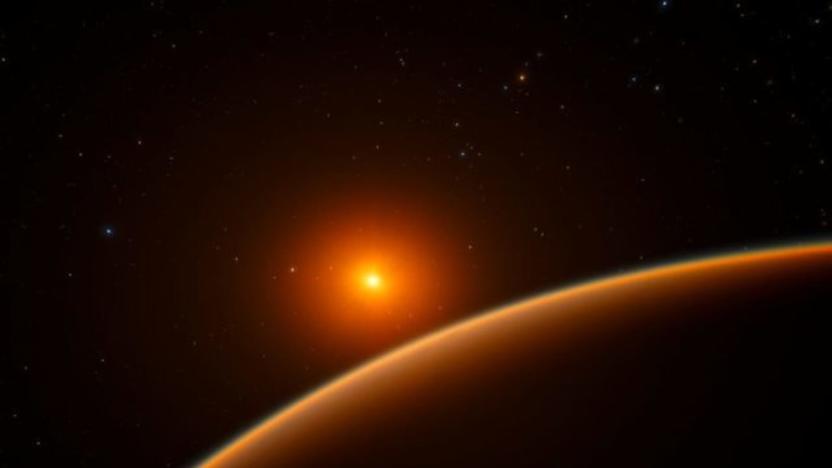
ESA’s search for Earth’s ‘twin’ starts in 2026
The European Space Agency (ESA) announced today that it is officially adopting the PLATO mission. PLATO, which stands for PLAnetary Transits and Oscillations of stars, is a planet-hunting project that will look for Earth twins -- planets just like our own.
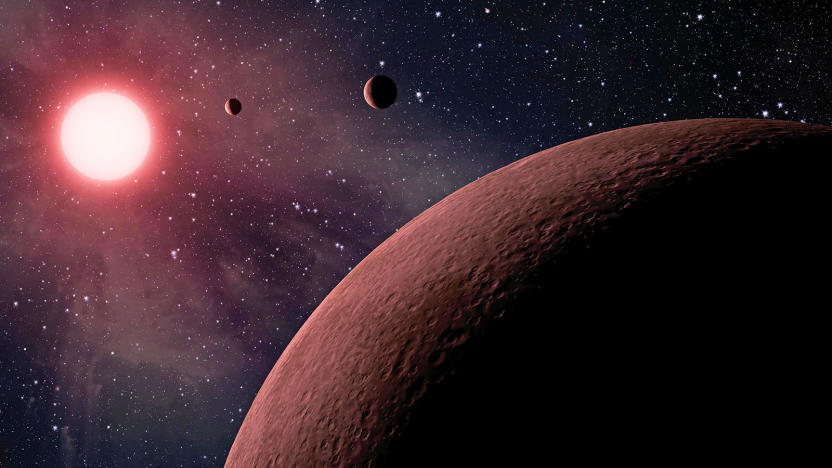
NASA found ten Earth-size planets with conditions ideal for water
Remember when everyone went nuts over the seven Earth-like planets the Spitzer telescope found back in February shortly after Trump was inaugurated? If you're still keen to leave, NASA has released a batch of 219 recently-discovered planet candidates -- including ten near-Earth size that orbit in their star's habitable zone.







